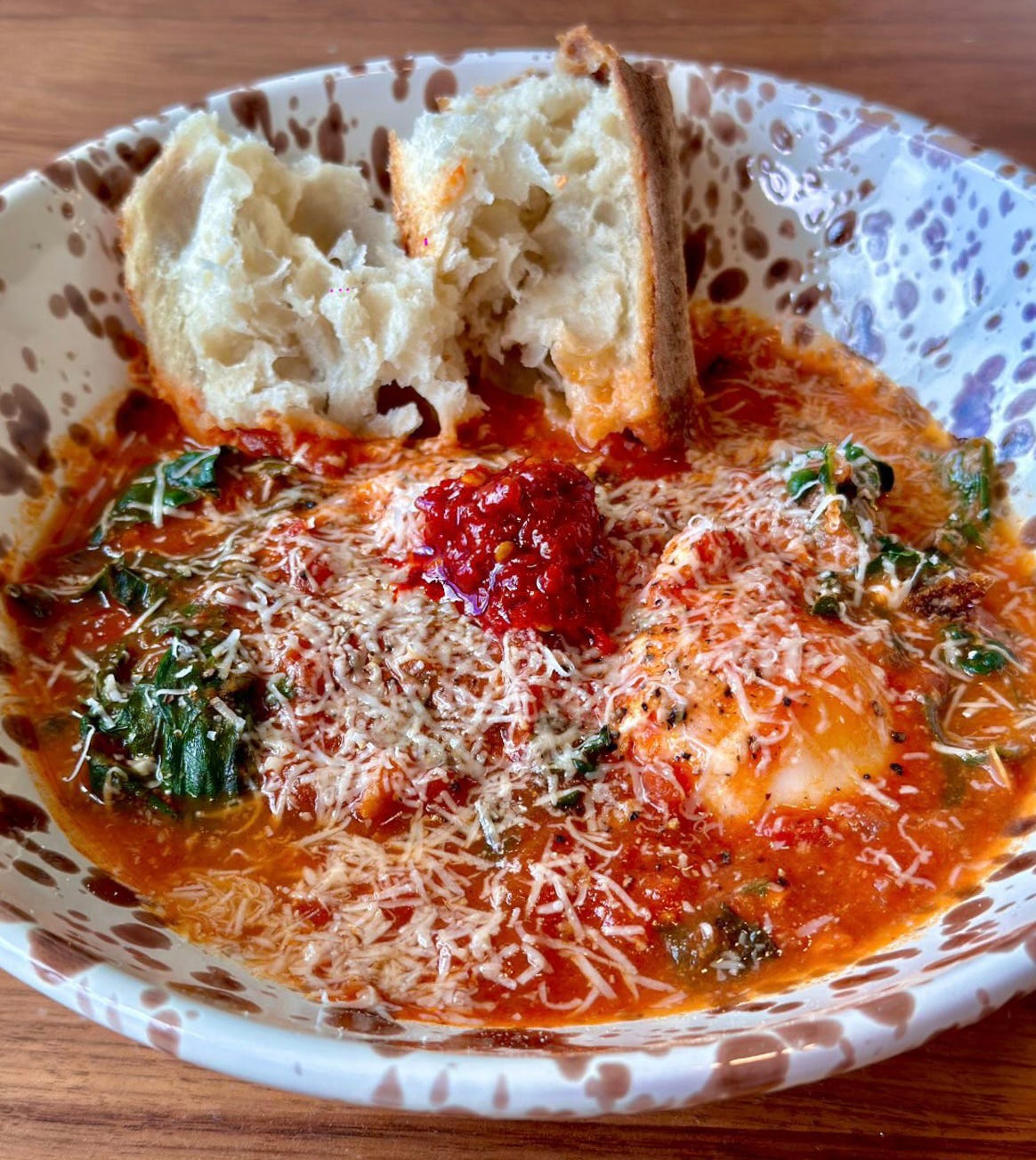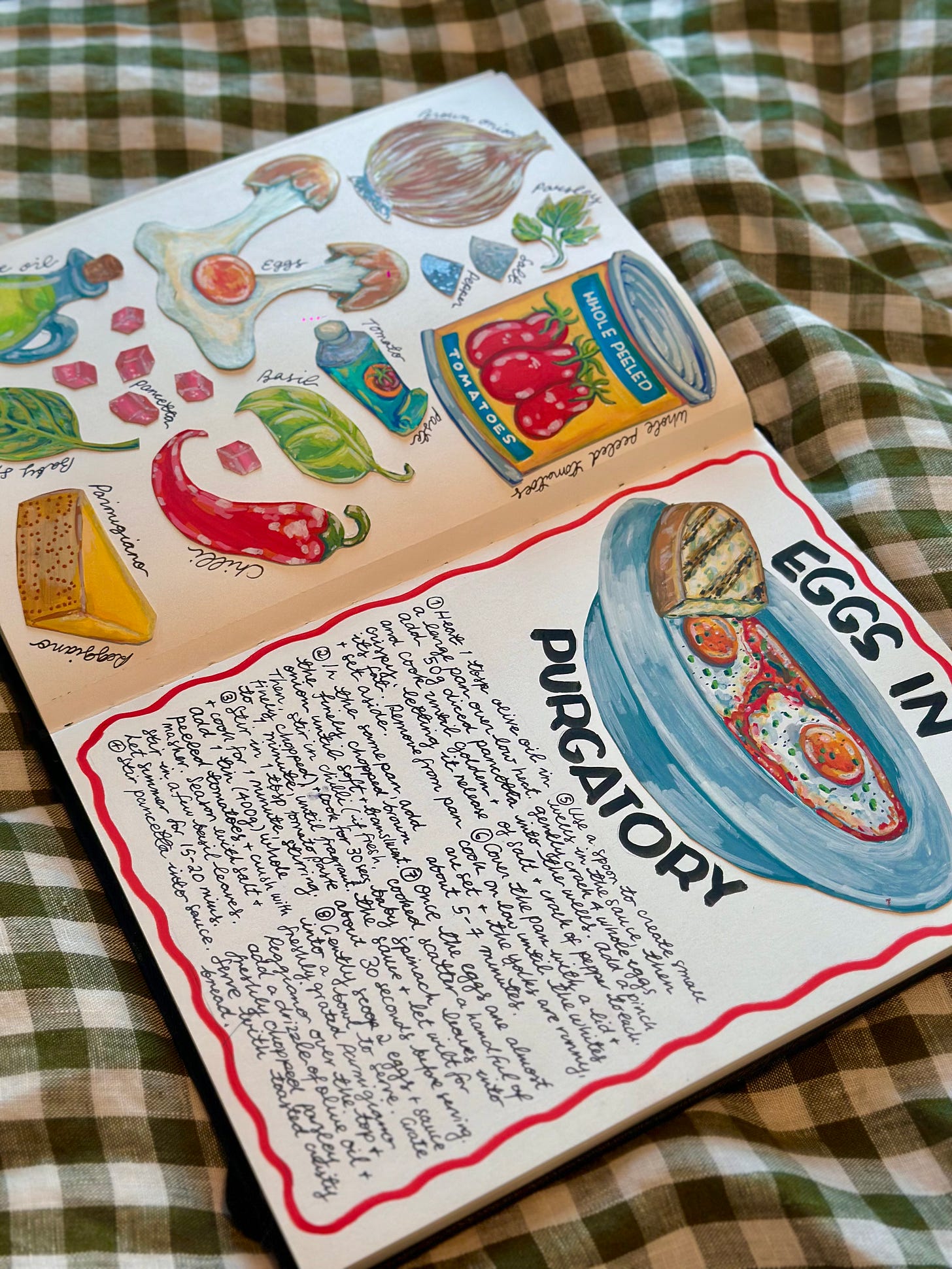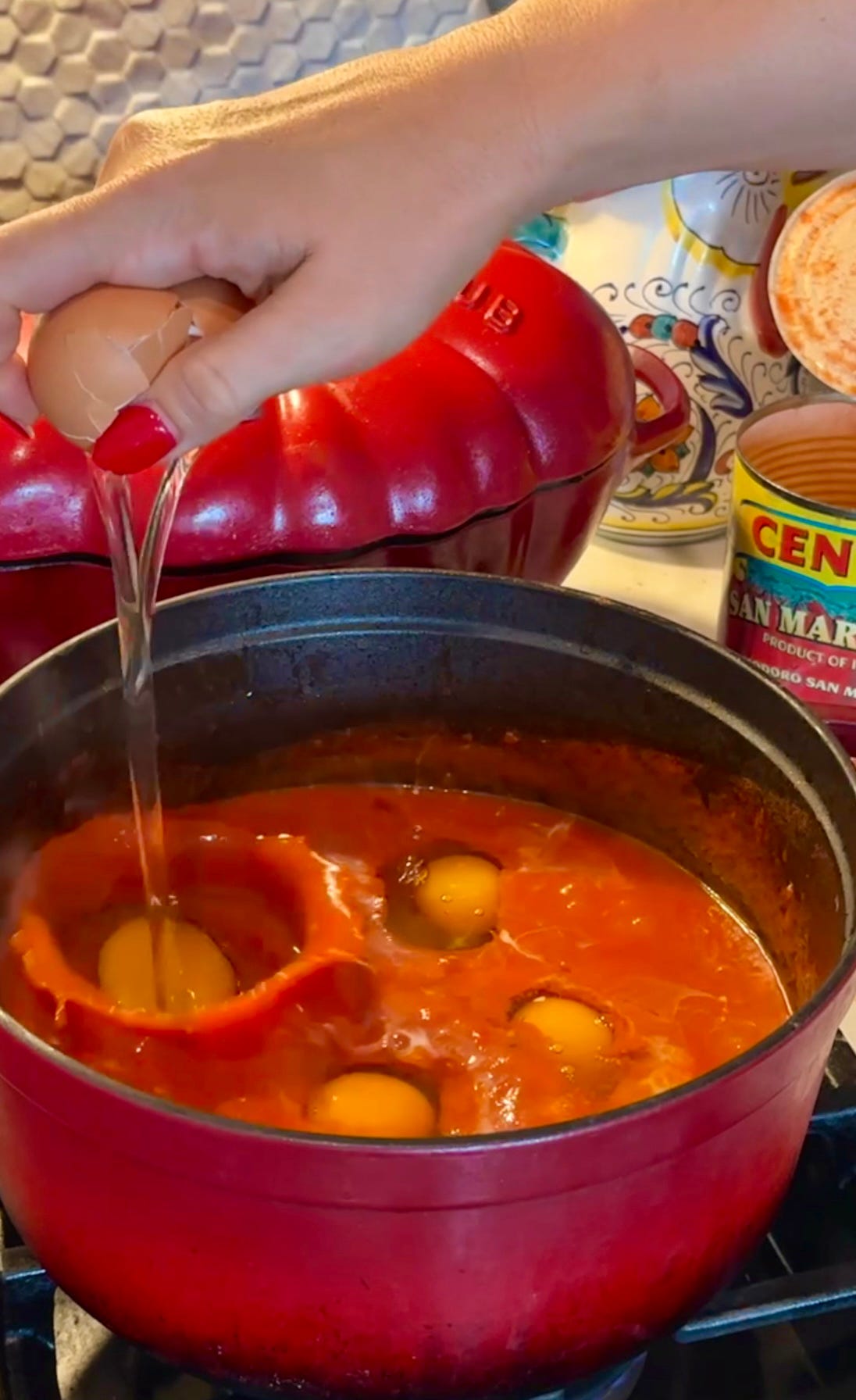Eggs in Purgatory: A Heavenly Dish with Hellish Heat - Recipe
The Italian cousin of shakshuka
Some dishes feel like home. For me, Eggs in Purgatory (Uova in Purgatorio) is one of them. My dad’s family is from Campania, Italy, where this dish has long been a staple, and my Nonna used to make it all the time. It brings me so much joy that I can carry on the tradition, knowing that something as simple as eggs and tomatoes can feel like a warm hug.
She’d often make it using leftover pasta sauce, a practical, no-waste, ‘cucina povera’ approach. If you’ve got sauce from last night’s dinner, just crack some eggs in, let them poach in the rich, bubbling goodness, and you’ve got a delicious meal ready in minutes.
A Pantry Hero
The beauty of Eggs in Purgatory is that it’s the perfect dish to make when you feel like you have nothing in the fridge or pantry. All you really need is olive oil, eggs and tomatoes. The rest? That’s up to you. You can beef it up with pancetta or sausage, or you can lean into the greens with spinach, kale, or peas to freshen things up.
Then there’s the heat factor. The chili is key to the dish’s name. After all, what’s purgatory without a little burn? But the spice level is completely up to you. Keep it mild with chilli flakes for a gentle warmth, or go all in with fiery Calabrian chilies for a proper inferno.
Where Did the Name Come From?
The name Uova in Purgatorio likely comes from the visual of eggs poaching in a bubbling, fiery-red sauce, resembling souls trapped between heaven and hell. In classic Italian dramatic style, it’s a poetic, slightly ominous image, but one that perfectly suits a dish that balances comfort with just the right amount of heat.
Shakshuka vs. Eggs in Purgatory
People often compare Eggs in Purgatory to Shakshuka, a North African/Middle Eastern dish made with eggs poached in spiced tomato sauce. While they’re similar, the Italian version is usually simpler, relying on fewer spices. Both are incredible, versatile, and easy to customize, but Eggs in Purgatory leans more into the rustic, no-fuss Italian approach.
When to Eat It? Anytime.
One of the best things about Eggs in Purgatory? You can have it for breakfast, lunch, or dinner. It’s quick, easy, and ridiculously delicious (which definitely helps). And, of course, it’s best served with a thick slice of crusty Italian bread to ‘scarpetta’ every last drop of that rich, spicy sauce.
This dish is the latest addition to my illustrated cookbook, where I bring Italian recipes to life through my drawings. I love capturing the beauty of food visually, just as much as I love cooking it.
Now, here’s my recipe so you can make it yourself.
Buon Appetito!
Bianca
Bianca’s Eggs in Purgatory (Uova in Purgatorio)
Serves 2
A rich, smoky, slightly spicy tomato sauce with pancetta-infused depth, perfectly poached eggs, and a finishing touch of Parmigiano and fresh parsley.
Keep reading with a 7-day free trial
Subscribe to Midnight Spaghetti to keep reading this post and get 7 days of free access to the full post archives.










